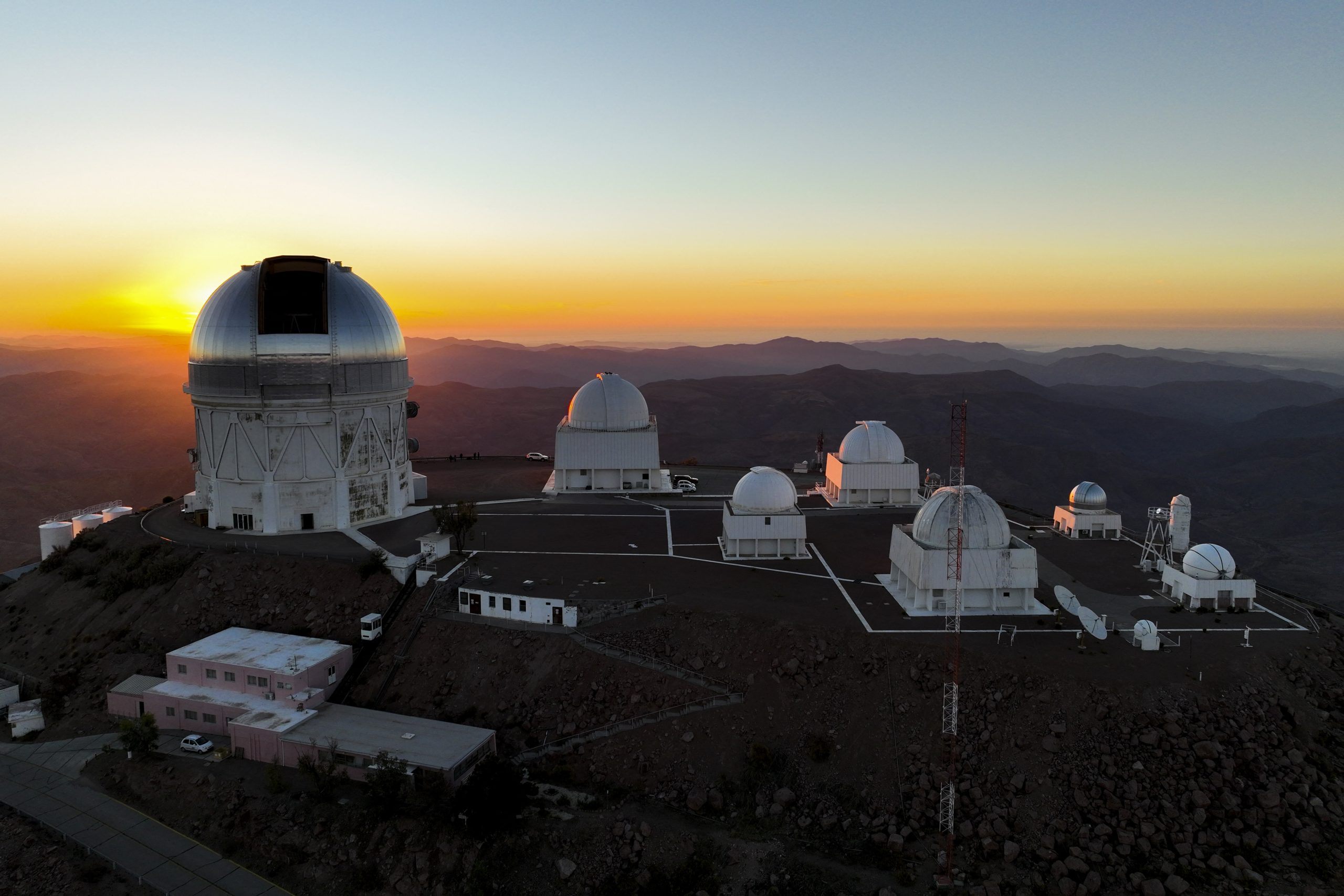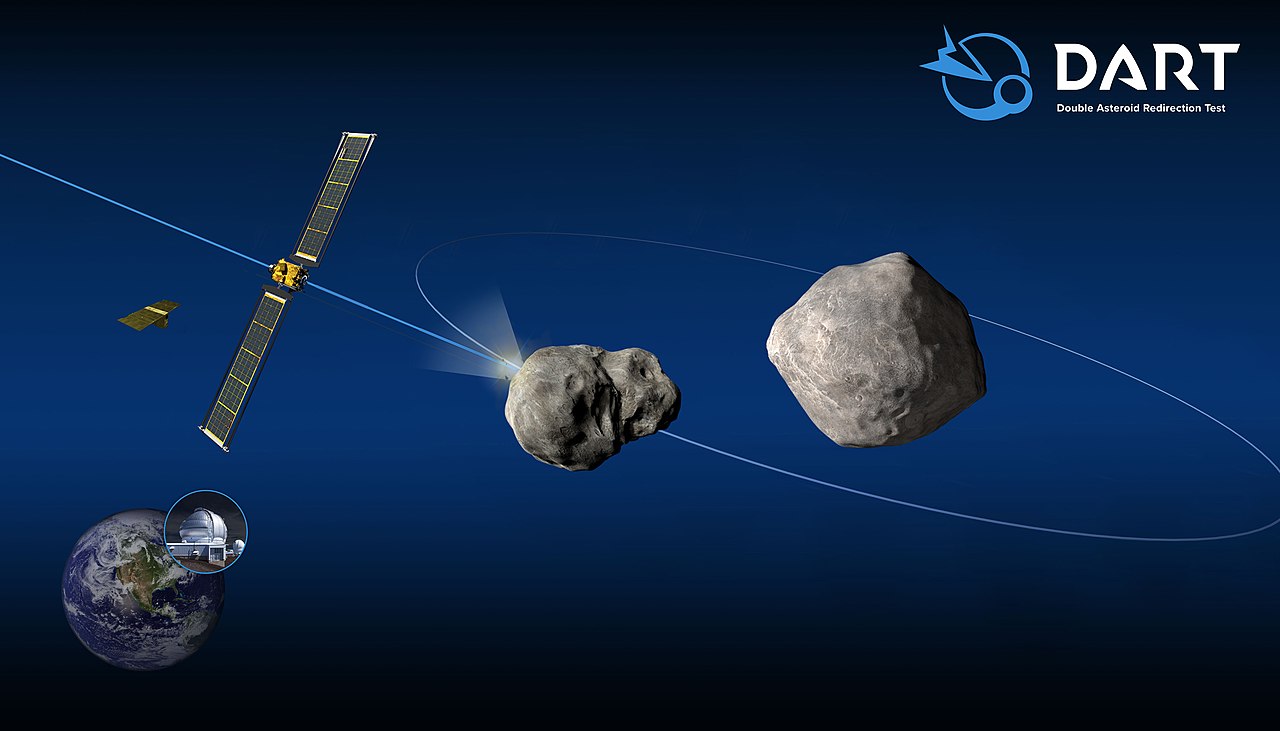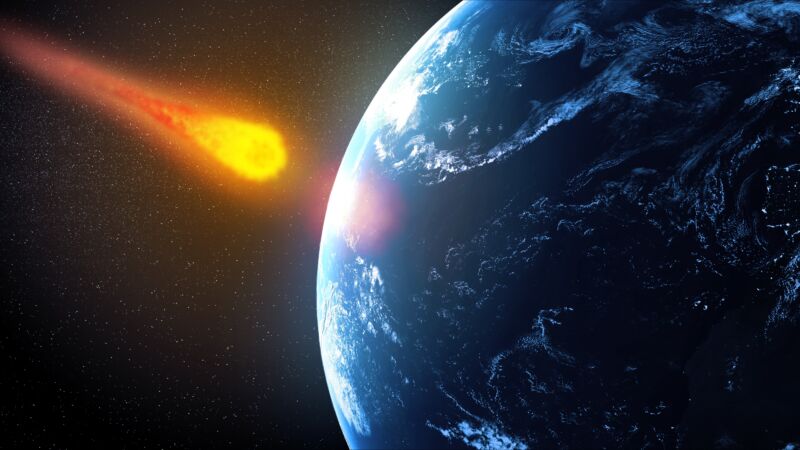Someday, an NEO will pose a threat to us. Thankfully, we have options.
In 2005, the United States Congress laid out a clear mandate: To protect our civilization and perhaps our very species, by 2020, the nation should be able to detect, track, catalog, and characterize no less than 90 percent of all near-Earth objects at least 140 meters across.
As of today, four years after that deadline, we have identified less than half and characterized only a small percentage of those possible threats. Even if we did have a full census of all threatening space rocks, we do not have the capabilities to rapidly respond to an Earth-intersecting asteroid (despite the success of NASA’s Double-Asteroid Redirection Test (DART) mission).
Some day in the finite future, an object will pose a threat to us—it’s an inevitability of life in our Solar System. The good news is that it’s not too late to do something about it. But it will take some work.
Close encounters
The dangers are, to put it bluntly, everywhere around us. The International Astronomical Union’s Minor Planet Center, which maintains a list of (no points award for guessing correctly) minor planets within the Solar System, has a running tally. At the time of the writing of this article, the Center has recorded 34,152 asteroids with orbits that come within 0.05 AU of the Earth (an AU is one astronomical unit, the average distance between the Earth and the Sun).
These near-Earth asteroids (or NEAs for short, sometimes called NEOs, for near-Earth objects) aren’t necessarily going to impact the Earth. But they’re the most likely ones to do it; in all the billions of kilometers that encompass the wide expanse of our Solar System, these are the ones that live in our neighborhood.
And impact they do. The larger planets and moons of our Solar System are littered with the craterous scars of past violent collisions. The only reason the Earth doesn’t have the same amount of visible damage as, say, the Moon is that our planet constantly reshapes its surface through erosion and plate tectonics.
It’s through craters elsewhere that astronomers have built up a sense of how often a planet like the Earth experiences a serious impact and the typical sizes of those impactors.
Tiny things happen all the time. When you see a beautiful shooting star streaking across the night sky, that’s from the “impact” of an object somewhere between the size of a grain of sand and a tiny pebble striking our atmosphere at a few tens of thousands of kilometers per hour.
Every few years or so, an object 10 meters across hits us; when it does, it delivers energy roughly equivalent to that of our earliest atomic weapons. Thankfully, most of the Earth is open ocean, and most impactors of this class burst apart in the upper atmosphere, so we typically don’t have to worry too much about them.
The much larger—but thankfully much rarer—asteroids are what cause us heartburn. This is where we get into the delightful mathematics of attempting to calculate an existential risk to humanity.
At one end of the scale, we have the kind of stuff that kills dinosaurs and envelops the globe in a shroud of ash. These rocks are several kilometers across but only come into Earth-crossing trajectories every few million years. One of them would doom us—certainly our civilization and likely our species. The combination of the unimaginable scale of devastation and the incredibly small likelihood of it occurring puts this kind of threat almost beyond human comprehension—and intervention. For now, we just have to hope that our time isn’t up.
Then there are the in-betweeners. These are the space rocks starting at a hundred meters across. Upon impact, they release a minimum of 30 megatons of energy, which is capable of leaving a crater a couple of kilometers across. Those kinds of dangers present themselves roughly every 10,000 years.
That’s an interesting time scale. Our written history stretches back thousands of years, and our institutions have existed for thousands of years. We can envision our civilization, our ways of life, and our humanity continuing into the future for thousands of years.
This means that at some point, either we or our descendants will have to deal with a threat of this magnitude. Not a rock large enough to hit the big reset button on life but powerful enough to present a scale of disaster not yet seen in human history.
It’s full of stars
At first glance, the congressional mandate focusing on objects of at least 140 meters across seems a bit arbitrary. But that number comes from an intersection of risk and detection capabilities. Smaller rocks are more numerous and hit us more frequently. But even though they cause only slightly less damage, they are that much harder to detect.
As astronomical targets go, asteroids are challenging. They are small, not very reflective, and they move quickly. The smaller the size, the harder we have to work to spot it. So we’ve landed on 140 meters, corresponding roughly to an absolute magnitude of 22: the smallest kind of asteroid that poses a threat that we still can reliably and comprehensively detect with current technology and budgeting.
The reason we have yet to fulfill the congressional mandate is that most NEA/NEO surveys operate as side hustles for telescopes. For example, the Dark Energy Survey (DES), which utilizes a 4-meter telescope at the Cerro Tololo Inter-American Observatory in Chile, primarily focuses on surveying galaxies deep in cosmic history. But clever astronomers have been able to use spare time on the telescope to search for potentially hazardous asteroids.

Aerial view of the Cerro Tololo Observatory, located in the Tololo hill near La Serena, Coquimbo Region, Chile.
The Vera C. Rubin Observatory will revolutionize the study of the universe when it incorporates the largest
digital camera ever built.
JAVIER TORRES/AFP via Getty Images
Starting in 2025, NEO searches will get a big boost when the Vera C. Rubin Observatory finally achieves first light. Featuring an 8.4-meter primary mirror, the telescope will image the entire available sky every few nights, providing an unprecedented view of the heavens. With a mirror of that size, the observatory is more than capable of detecting NEOs. And with its rapid re-imaging, it can easily pick out the motions of asteroids. (Relatively speaking, of course—it still means sifting through absolute mountains of data with sophisticated algorithms).
The Rubin Observatory should be able to meet the congressional mandate in terms of identifying and tracking, but it still comes up short on one critical ability: characterizing. The problem is that there isn’t just one kind of asteroid. Some are loose piles of rubble. Others have dense cores of heavier elements. Some are almost spherical; others look like giant gray lumpy peanuts.
All these details matter when we attempt a threat assessment. Different asteroid compositions and geometries reflect sunlight in different ways, which subtly alters their orbits. Those subtle changes add up in time, leading to radically different pathways through the Solar System. And if a disaster were imminent, dealing with a loose pile of rubble requires a completely different strategy than if we were faced with a metal-rich asteroid.
Fully characterizing an asteroid takes repeated observations, monitoring how light reflects off it as it moves through its orbit and correlating measurements at different wavelengths.
Those observations are the job of the NEO Surveyor, set to launch no later than June 2028. It will work in conjunction with ground-based surveys to provide a network of overlapping observations to finally fulfill the congressional mandate—and warn us of any major threat.
A mighty wind
In their ample spare time, scientists have come up with a way to handily categorize hazardous asteroids, much like the Richter scale or the Hurricane Wind scale. In fact, they made two, known as the Torino and Palermo scales (I guess when scientists host conferences discussing the end of the human species, they like to do it in Italy).
The Torino scale starts at level 0, color-coded at white, which corresponds to either a chance of collision of zero or, if there is a collision, that the rock is so small that it’s not worth talking about further. Moving up from there is level 1, coded green. While these rocks might be a threat, the probability is so low that further observations almost always reclassify them down to 0.
Then we get somewhere interesting with levels 2–4, colored yellow, where the potential threat merits further attention. Levels 5–7, colored orange, are actually threatening, posing an elevated risk due to a combination of size and probability of impact. Finally, there are levels 8–10, colored red, where a collision is certain and could cause anywhere from “localized destruction” to “unprecedented regional devastation” and onward, ending up at everybody’s favorite, “global climactic catastrophe.”
If you ever want to get a taste of how we would approach a potential threat, NASA’s Jet Propulsion Lab (JPL) has something right up your alley. JPL hosts the Center for Near Earth Object Studies, or CNEOS (who knew that preventing the extinction of our species would rely on so many acronyms). CNEOS scientists regularly host simulated exercises, in which a series of pretend observations transform a potentially hazardous object into a seriously dangerous one.
Let’s say that astronomers will one day be able to identify, track, and characterize a near-Earth asteroid. Alerts would be sent out worldwide, and more astronomers and more observatories would join in the effort. With more data would come better predictions; we would get a detailed geometry of the asteroid, its composition, and its future orbit. With every passing day, the uncertainties on its course would continue to shrink, the predictions narrowing down the areas on the surface of the Earth that have the maximum chance of impact.
It's at this stage that we would have two choices. We either move the rock or simply hold on for dear life. Thankfully, moving the rock is a viable option, as NASA’s Double Asteroid Redirection Test (DART) showed. Launched toward the tiny moonlet of the asteroid Didymos, the mission's goal was simple: slam into the asteroid. While “punching an asteroid in the face” might seem like the height of futility, the mission was a success, with the spacecraft making a measurable change in the asteroid’s orbit.

Diagram of the DART spacecraft striking Dimorphos, a moonlet of the asteroid Didymos.
NASA/Johns Hopkins Applied Physics Lab
I am the keymaster
If we catch a threatening asteroid early enough, we don’t have to move it all that much. Asteroids regularly travel millions of kilometers, and even the tiniest of changes to their direction of travel or velocity compound quickly. In addition, Earth is positively miniscule compared to the vast expanses of nothingness that define the volume of our Solar System.
If humanity were sufficiently motivated, we could build an impact vessel, load it down with the cameras, targeting software, and thrusters that the DART mission had, and send it on its way. It would strike its target at a predetermined position and angle of impact, throwing the asteroid ever-so-slightly off course. The asteroid would then continue on its merry way, relatively unbothered by the impact with our deflector but on a slightly new orbit that hopefully never intersects the Earth.
But this only works if we see the asteroid early enough and have the depth of observations needed to fully characterize the size, shape, composition, and orbit of the asteroid. We could then reliably simulate the effects of the impact, both in terms of its effectiveness and the resulting changes in orbital dynamics.
That’s a lot of ifs. Compounding these issues is that predicting future orbits for such tiny objects is notoriously complicated. Yes, we may successfully throw a potentially Earth-crossing asteroid off course… into a new orbit that is all but guaranteed to strike our planet at some later date.
One of the ways this nonintuitive behavior is possible is through what are called keyholes. The gravitational environment of the solar system is complicated and ever-shifting, with every point in space influenced in some way by the arrangements of the massive planets. Most orbits within the Solar System are stable and predictable. But there are certain regions—the keyholes—where predicting future trajectories are almost impossible. The gravity is so complex in the keyholes that orbits become chaotic. An asteroid can enter a keyhole in one direction and come out in almost any other. The tiniest of changes to an asteroid’s orbit, say, from uneven surface heating due to slight color changes across the face of the asteroid, can lead to wildly different orbits if they take it through a keyhole.
So if we go about the game of deflecting asteroids, we have to ensure that their new trajectories don’t take them near any keyholes. If they do, we may just be jumping from one disaster to another—possibly one that allows way less time to react and prepare.
I don’t want to miss a thing
But maybe we could take dangerous asteroids and…blow them up. Yes, that is the plot of Armageddon. No, there will likely not be a rocking soundtrack to accompany the mission.
Altering trajectories of fast-moving, massive asteroids is hard. We need a lot of warning, and we have to make sure our calculations are on point.
The danger of a giant asteroid comes directly from its size, as it has more kinetic energy to deliver to our planet. A smaller rock traveling at the same speed would simply burn up in our atmosphere. That’s the driving logic behind PI, a new planetary defense initiative funded by NASA’s Innovative Advanced Concepts Program (disclosure notice: I serve on the advisory council for this program, so of course I think it’s cool).
The idea behind PI is simple. We find a large asteroid on a dangerous trajectory. We load a big bomb (preferably nuclear) on a rocket. We shoot it at the asteroid. The rocket buries itself as deeply as possible into the asteroid and blows up, fragmenting the large asteroid into many smaller ones.
Multiple studies have shown that most asteroids are “rubble piles”—just loose collections of boulders barely clinging together through their mutual gravitational attraction. If we were to try to blow up an asteroid, a few of those boulders would be flung away. Most of the asteroid would likely expand into fragments traveling on the same trajectory—a cosmic grapeshot.
But if we did it right, those smaller fragments would just burn up in our atmosphere, transforming an end-of-days killer asteroid into the most magnificent meteor shower the world has ever seen. Of course, this is just an interesting idea right now, still in the simulation phase.
We have our work cut out for us if we’re going to find a way to defend ourselves when our cosmic time is up.
Source



3175x175(CURRENT).thumb.jpg.b05acc060982b36f5891ba728e6d953c.jpg)


Recommended Comments
There are no comments to display.
Join the conversation
You can post now and register later. If you have an account, sign in now to post with your account.
Note: Your post will require moderator approval before it will be visible.